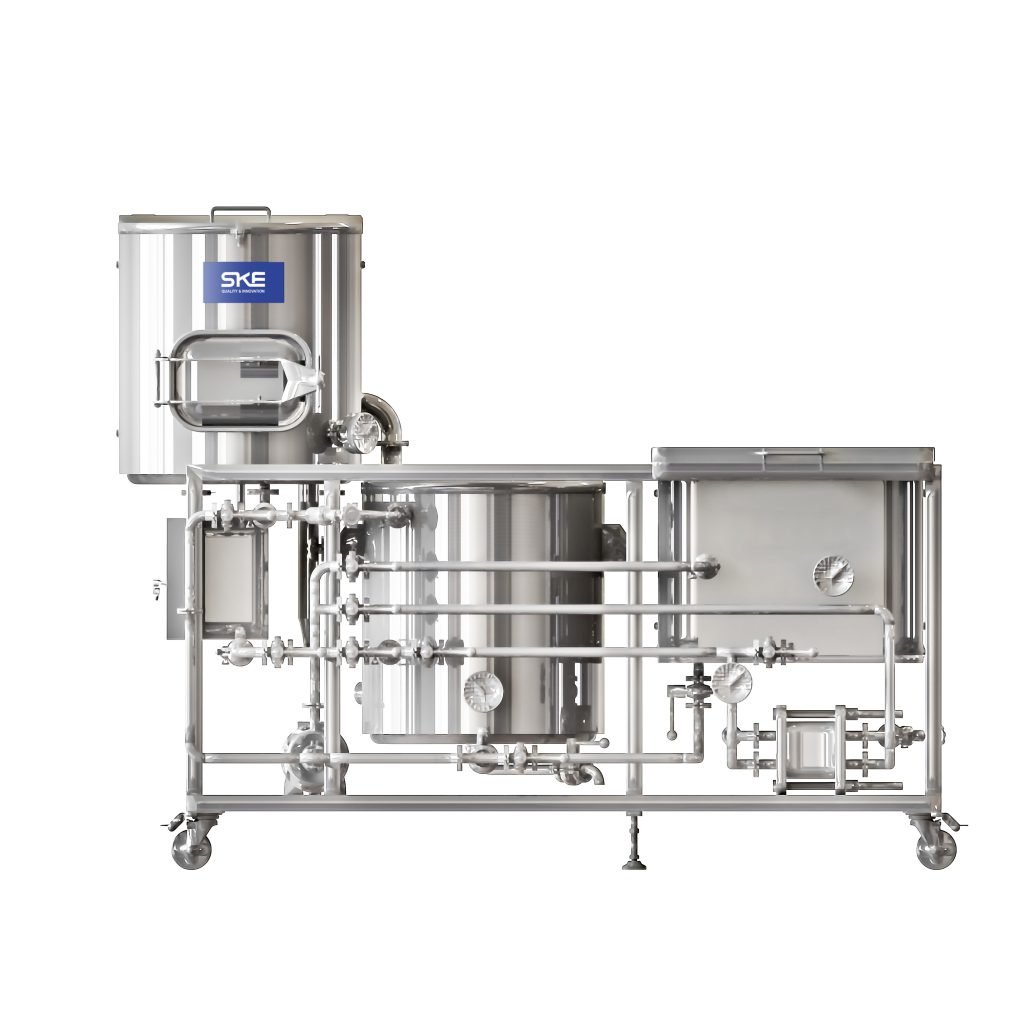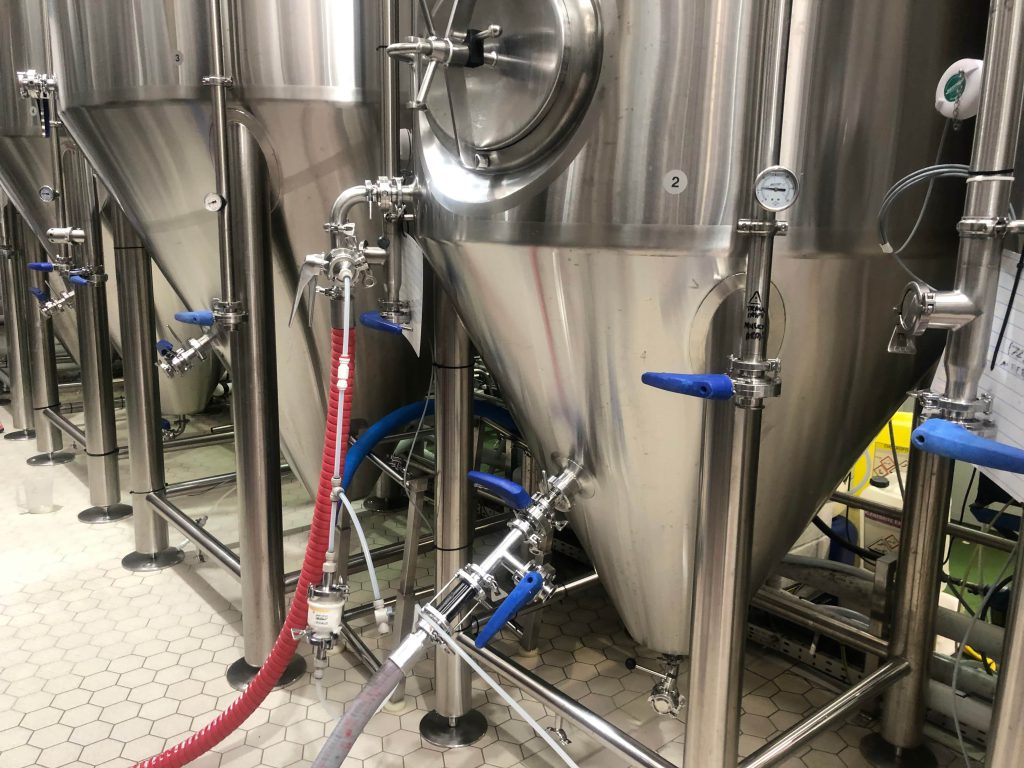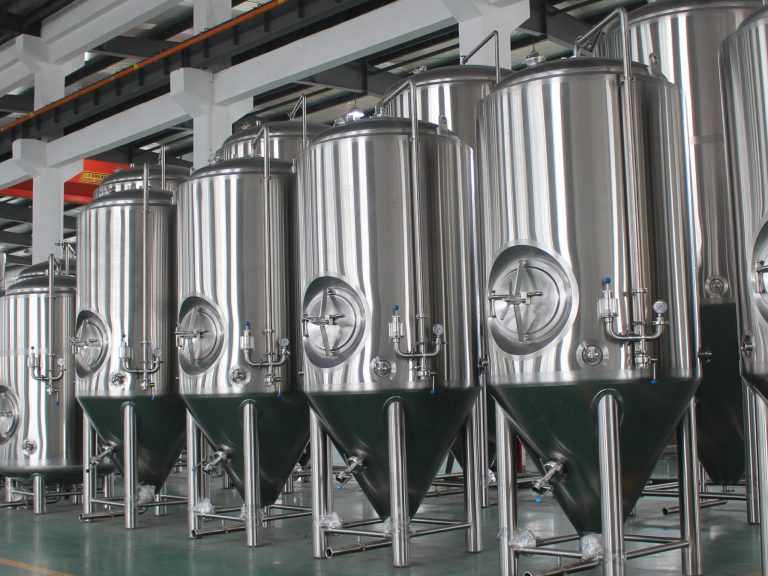導入

醸造の世界では、高度な設備技術を習得することは、職人が筆を扱うことに似ています。一筆一筆が正確で、決断一つ一つがグラスの中の傑作を形作ります。この総合ガイドでは、醸造設備の複雑な世界を詳しく調べ、すべての真剣な醸造家が理解し実践すべき重要な技術とツールを紹介しています。完璧を目指す自家醸造家でも、商業的な運営を管理する人でも、設備の使用を最適化することで、醸造物の品質と一貫性を大幅に向上させることができます。
理解 Brewing Equipment
To navigate the complexities of advanced brewing techniques, a solid understanding of fundamental brewing equipment is essential. From the stalwart mash tun to the versatile fermenter and the steadfast boiler, each piece plays a pivotal role in the brewing process. Let’s briefly explore these components:
マッシュタン: The heart of the brewing process where milled grains are mixed with hot water to convert starches into fermentable sugars.
Fermenters: Vessels where yeast transforms sugars into alcohol and carbon dioxide, crucial for flavor development and alcohol content.
Boilers: Used for boiling wort, a vital step in hop utilization, protein coagulation, and sterilization.
Pumps and Valves: Facilitate fluid movement throughout the brewing system, controlling flow rates and maintaining process consistency.
Understanding how each piece of equipment functions and interacts with others sets the stage for implementing advanced techniques effectively.
Optimizing Heat Exchange Systems
Efficient heat exchange lies at the core of brewing processes such as mashing, boiling, and cooling. Advanced techniques employ sophisticated heat exchangers like plate heat exchangers and counterflow chillers to maximize thermal efficiency. These systems optimize the transfer of heat between different process fluids, minimizing energy consumption and maintaining precise temperature control throughout the brewing cycle.
For example, plate heat exchangers utilize multiple thin, corrugated metal plates to create a large surface area for heat transfer between hot wort and cold water streams. This design allows for rapid cooling or heating, depending on the brewing stage, while minimizing the risk of thermal shock to the beer.
Advanced Wort Aeration Methods
Aeration of wort—a process of introducing oxygen to promote yeast growth and fermentation—is critical for achieving robust fermentation and desirable beer flavors. Advanced techniques go beyond simple splashing or shaking by employing specialized equipment such as inline oxygenation systems and venturi tubes.
Inline oxygenation systems precisely control the amount of oxygen dissolved in wort, ensuring optimal yeast health without introducing excessive oxygen that could lead to off-flavors like oxidation. Venturi tubes utilize the principle of fluid dynamics to draw in and mix oxygen with wort under controlled conditions, offering a cost-effective alternative for smaller-scale operations.
Understanding the science behind oxygen solubility and practical applications of these advanced methods can significantly enhance fermentation outcomes and overall beer quality.
Utilizing Automated Control Systems
Automation revolutionizes brewing by providing precise control over critical parameters such as temperature, pressure, and flow rates. Advanced control systems, including PID controllers and PLCs (Programmable Logic Controllers), integrate seamlessly with brewing equipment and software to monitor and adjust conditions in real-time.
PID controllers maintain stable temperatures during mashing and fermentation by continuously adjusting heating elements or cooling systems based on sensor feedback. PLCs offer broader automation capabilities, orchestrating complex brewing processes with programmed logic sequences that ensure consistency and reproducibility batch after batch.
Integrating automation with brewing software enhances data management, allowing brewers to analyze process metrics, optimize recipes, and troubleshoot issues efficiently. This synergy between technology and craftsmanship empowers brewers to achieve unparalleled control over their brewing operations.
Enhancing Cleaning and Sanitization Protocols
Maintaining impeccable hygiene is paramount in brewing to prevent contamination and ensure product quality and safety. Advanced cleaning techniques leverage specialized equipment such as Clean-in-Place (CIP) systems and automated sanitization procedures.
CIP systems automate the cleaning process by circulating cleaning solutions through brewing equipment, removing residues, and sanitizing surfaces effectively. These systems are tailored to the specific requirements of brewing equipment, ensuring thorough cleaning without disassembly.
Automated sanitization procedures complement CIP systems by applying sanitizing agents at precise concentrations and contact times, eliminating microbial threats while minimizing chemical usage and water waste. By adopting advanced cleaning and sanitization protocols, brewers uphold rigorous hygiene standards and safeguard the integrity of their brews.
Comparison of Advanced Filtration Methods
| 方法 | Efficiency Rating | 費用対効果 | Impact on Flavor |
|---|---|---|---|
| Diatomaceous Earth Filter | 高い | 適度 | 最小限 |
| Centrifuge | すごく高い | 高い | 最小限 |
| Crossflow Filtration | 高い | 高い | 最小限 |
Implementing Advanced Filtration and Clarification

Achieving clarity in beer appearance without compromising flavor and mouthfeel is a hallmark of professional brewing. Advanced filtration methods, such as diatomaceous earth filters, centrifuges, and crossflow filtration systems, offer diverse approaches to achieving desired beer clarity.
Diatomaceous earth filters utilize a fine mesh of fossilized diatoms to trap yeast, protein particles, and other haze-causing substances, producing crystal-clear beer with minimal impact on flavor. Centrifuges employ centrifugal force to separate solids from liquids rapidly, offering high throughput and efficiency in large-scale operations.
Crossflow filtration systems operate by forcing beer through specialized membranes that selectively remove particles based on size, achieving consistent clarity without affecting flavor compounds or mouthfeel. Brewers can select filtration methods based on their production scale, beer style requirements, and desired filtration efficiency.
結論
Mastering advanced 醸造設備 techniques is a continuous journey that blends scientific understanding with practical application. By optimizing heat exchange systems, implementing advanced aeration methods, leveraging automated control systems, enhancing cleaning protocols, and refining filtration techniques, brewers can elevate the quality and consistency of their brews. Whether you’re refining your current setup or embarking on a new brewing venture, these techniques empower you to craft exceptional beers that delight and inspire.
よくある質問
Q:自動化はどのような役割を果たすのか 醸造?
A:Automation enhances process control, ensuring consistent brewing conditions and quality across batches. It optimizes efficiency and reduces human error.
Q:Why is heat exchange crucial in brewing?
A:Efficient heat exchange ensures precise control of temperatures during mashing, boiling, and cooling, influencing flavor extraction and process efficiency.
Q:How do advanced filtration methods impact beer quality?
A:Different filtration methods offer varying degrees of clarity without compromising beer flavor, meeting the aesthetic and sensory expectations of consumers.

